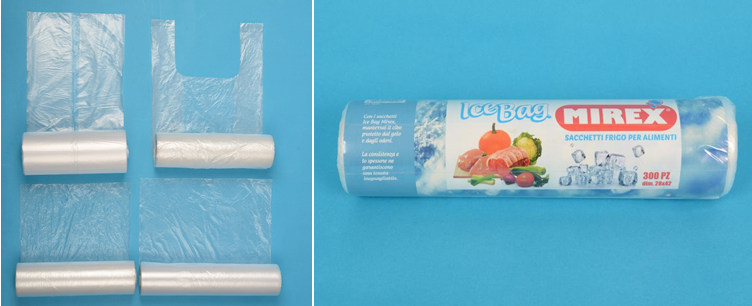The plastic bags commonly used in the market are made of the following materials: high-pressure polyethylene, low-pressure polyethylene, polypropylene, polyvinyl chloride, and recycled materials.
High-pressure polyethylene plastic bags can be used as food packaging for cakes, candies, roasted seeds and nuts, biscuits, milk powder, salt, tea and other food packaging, as well as fiber products and daily chemical products packaging; low-pressure polyethylene plastic bags are usually used as fresh-keeping bags, convenience bags, shopping bags, Handbags, vest bags, garbage bags, bacterial seed bags, etc. are not used for cooked food packaging; polypropylene plastic bags are mainly used for packaging textiles, cotton products, clothing, shirts, etc., but cannot be used for cooked food packaging; polyvinyl chloride plastic Bags are mostly used for bags, needle cotton packaging, cosmetics packaging, etc., not to be used for cooked food packaging.
In addition to the above four, there are also many colorful market convenience bags made of recycled materials. Although plastic bags made of recycled materials look bright and beautiful, they cannot be used to package food because they are made of recycled materials from waste plastics.
What methods can help us judge whether the plastic bag in our hand can be used to package food?
Look: First, look at whether the appearance of the plastic bag has a “food use” mark. Usually this logo should be on the front of the packaging bag, a more eye-catching position. Secondly, look at the color. Generally speaking, colored plastic bags mostly use recycled materials from waste plastics and cannot be used for food. For example, some black plastic bags used to hold fish, shrimp and other aquatic products or meat in some vegetable markets were originally used to hold garbage, and consumers should avoid using them. Finally, it depends on the presence or absence of impurities in the plastic bag. Put the plastic bag in the sun or light to see if there are black spots and openings. Plastic bags with impurities must use waste plastics as raw materials.
Smell: Smell the plastic bag for any peculiar smell, whether it makes people feel sick. Qualified plastic bags should be odor-free, and unqualified plastic bags will have various odors due to the use of harmful additives
Tear: Qualified plastic bags have a certain strength and will not tear as soon as they are torn; unqualified plastic bags are often weak in strength due to the addition of impurities and are easy to break.
Listen: qualified plastic bags will make a crisp sound when shaking; unqualified plastic bags are often “buzzing”.
After understanding the basic types and characteristics of plastic bags, you can know that you don’t have to be intimidated when using plastic bags for food, and you will be more comfortable in your life.
Post time: Dec-31-2021







